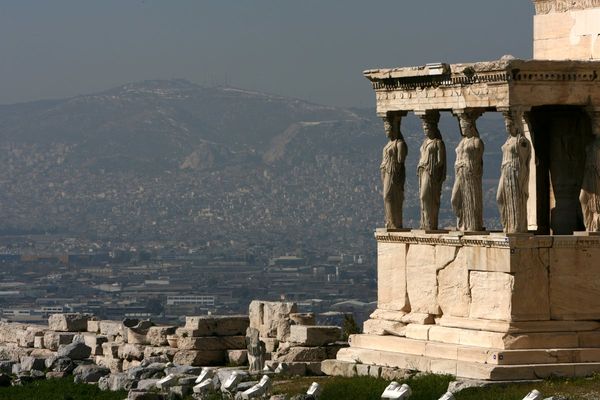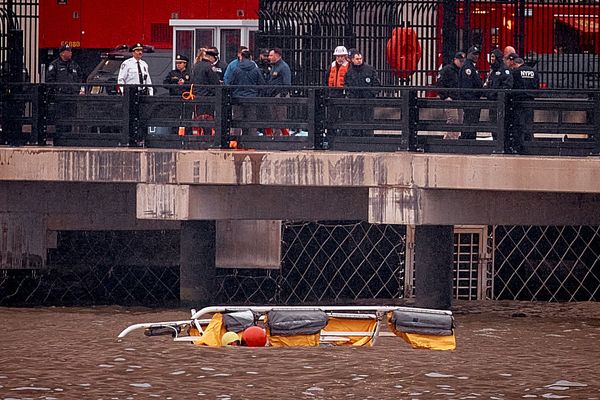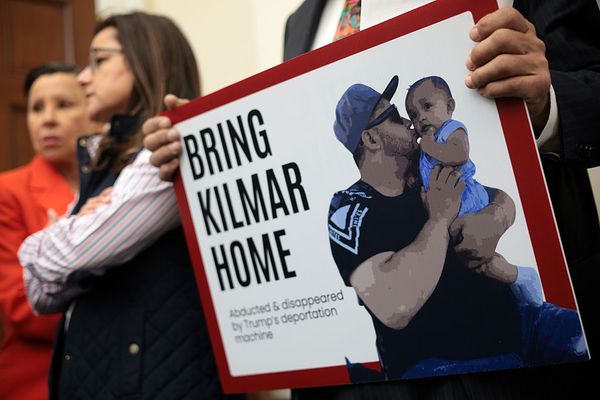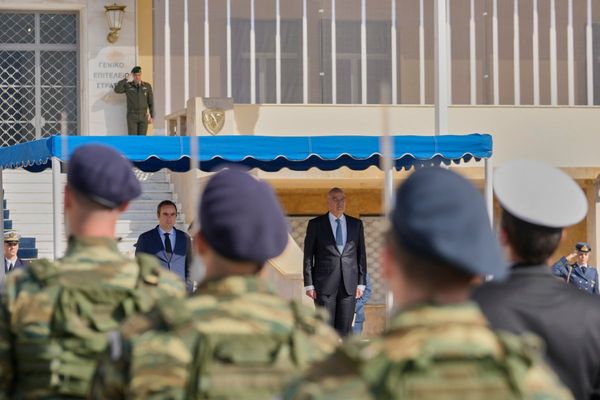
As global attention remains focused on the hostage-prisoner swaps between Hamas and Israel, another ceasefire in the region hangs in the balance.
The 14-month war between Israel and Hezbollah, a Shia Muslim militia which has been the most dominant political faction in Lebanon for the past two decades, was paused by a US-brokered ceasefire in late November. The agreement also paved the way to end years of political deadlock in Beirut. Lebanon has formed a new government, and finally has leaders chosen for their promises to carry out reforms, rather than their sectarian affiliations – but the future of the ceasefire deal has left them facing an immediate crisis.
The original 60-day ceasefire was intended to give the two sides time to negotiate a longer truce. Under the deal, Israeli was supposed to fully withdraw its troops from parts of southern Lebanon it had invaded in October, while Hezbollah agreed to move its fighters and weapons north of the Litani river, about 16 miles (25 km) from the Israel-Lebanon border. The Israeli and Hezbollah withdrawals would allow the Lebanese army to move into southern Lebanon.
As the deadline for Israel to pull out its forces neared, Benjamin Netanyahu’s government said it would not comply with a full withdrawal and the ceasefire was extended for three weeks until 18 February. That extension has now expired, and while Israel withdrew from a number of Lebanese towns and villages, it is keeping troops in five strategic locations across southern Lebanon that provide vantage points or are located across from communities in northern Israel. While Israeli officials are calling it a “temporary” deployment of troops inside Lebanon, it’s an occupation of Lebanese territory and it could lead to the ceasefire’s collapse.
In a speech on Sunday, Hezbollah’s leader, Naim Qassem, warned that Israel must completely withdraw its forces by the 18 February deadline. While he stopped short of promising to renew Hezbollah’s attacks, he cautioned: “Everyone knows how an occupation is dealt with.” In fact, Hezbollah was founded in the 1980s – with the help of Iran’s Revolutionary Guards – to fight the Israeli occupation of southern Lebanon, which followed Israel’s 1982 invasion that was intended to expel the Palestine Liberation Organisation (PLO) from Lebanon. While Israel succeeded in driving out the PLO and other Palestinian factions, the subsequent occupation gave birth to one of Israel’s most formidable enemies: Hezbollah, which fought an 18-year guerilla war that eventually forced Israel to withdraw from southern Lebanon in 2000.
Hezbollah has been severely weakened by its most recent war with Israel, which assassinated most of the group’s top leaders and destroyed a significant portion of its estimated arsenal of more than 100,000 missiles and rockets. But, as it has done in the past, Israel risks overreaching after its initial victory on the battlefield, especially as the US failed to restrain Netanyahu from prolonging Israel’s war in Gaza and expanding it into Lebanon. Netanyahu’s government has convinced Donald Trump and his administration to allow Israel to keep a “long term” military presence in southern Lebanon, according to Israeli press reports.
If Israel continues to occupy parts of Lebanon, with Trump’s blessing, it would not only risk renewed conflict with Hezbollah, but also deal a death blow to Lebanon’s new leadership.
The new president, Joseph Aoun, and prime minister, Nawaf Salam, have pledged to prioritise economic reforms, manage reconstruction after the devastating war with Israel and deploy the Lebanese army in areas that had been controlled by Hezbollah. But they will lose most of their momentum to implement reforms unless Israel withdraws its remaining troops from Lebanon and the two countries can negotiate a more permanent truce.
A prolonged Israeli occupation of Lebanese territory – even if Israel tries to portray it as a defensive move intended to protect Israeli communities across the border – would cripple Lebanon’s new leaders before they’ve had a chance to tackle the country’s deep economic and social problems, which long predate the recent war.
The latest Israel-Hezbollah conflict started a day after the 7 October 2023 Hamas attack on southern Israel, when Hezbollah began firing rockets into northern Israel. The militia’s leaders said it was an effort to support their Palestinian allies and divert Israeli military resources from Gaza. For 11 months, the daily exchange of fire across the Israel-Lebanon border fluctuated, as Hezbollah tried to avoid a wider war it feared losing. By September, Israel dramatically escalated the conflict when it detonated thousands of pagers and walkie-talkies used by Hezbollah members, killing dozens and wounding more than 3,000 people. Israel then assassinated the group’s longtime leader, Hassan Nasrallah, in a massive airstrike on a building complex in Beirut’s southern suburbs.
By December, Israeli attacks over 14 months had killed more than 4,000 people and displaced more than 1 million, nearly a quarter of Lebanon’s population. The World Bank estimated that the conflict caused $8.5bn in economic losses to Lebanon, including nearly 100,000 housing units that were damaged or fully destroyed.
Even before the recent war, Lebanon was suffering from an economic crisis precipitated by the country’s dysfunctional political structure and its corrupt former warlords who took control of the state in the early 1990s at the end of a 15-year civil war. The economic collapse began in the fall of 2019, when banks ran out of dollars to pay their depositors and the Lebanese currency eventually lost more than 98% of its value. The World Bank labelled it as one of the most severe economic collapses worldwide since the mid-19th century.
As a majority of Lebanese people struggled to secure food, medicine, fuel and other necessities, the country’s sectarian leaders continued to bicker over control of various ministries and were unable to elect a president or form a cabinet for years. But the political class was finally able to break the deadlock after the ceasefire and Hezbollah’s weakening.
The task of rebuilding the economy – and swaths of Lebanon newly devastated by war with Israel – falls to a new Lebanese government that must maintain a perilous truce and keep a powerful neighbour at bay.
Mohamad Bazzi is director of the Hagop Kevorkian Center for Near Eastern Studies, and a journalism professor at New York University
Do you have an opinion on the issues raised in this article? If you would like to submit a response of up to 300 words by email to be considered for publication in our letters section, please click here.







